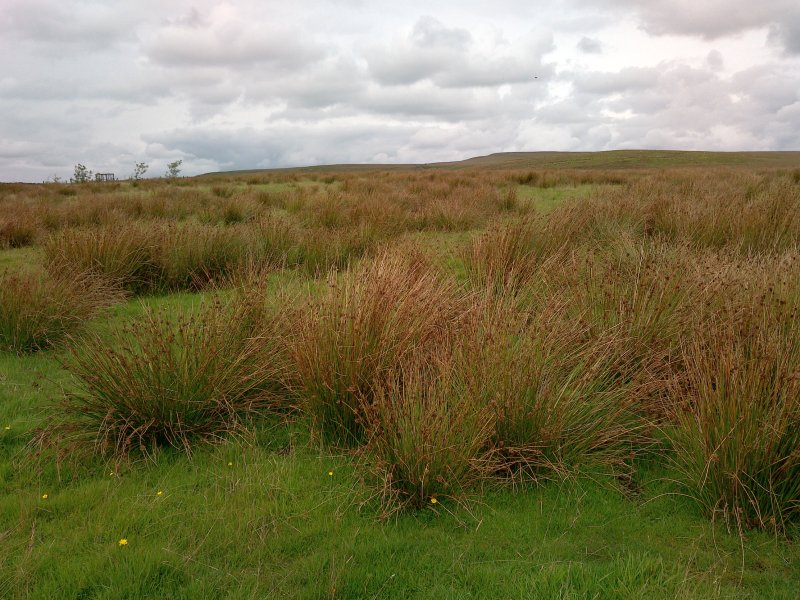
Invasive native species of rushes are spreading across UK upland farms and have the potential to threaten livelihoods of farmers, a new study says.
Scientists have used a series of Google Earth images to plot the spread of rushes in farm fields in the West Pennine Moor SSSI – an area of the Lancashire uplands.
The study is the first to investigate the spread of rushes in areas of the uplands across the United Kingdom.
Although it focused on one area of upland, anecdotal evidence suggests the problem could be happening across many other UK hill farms.
Using more than 200 images from Google Earth taken across a 13-year period between 2005 and 2018, researchers found that rushes have spread across the surveyed area by between 82% and 174%.
Rushes, which are much taller than typical pasture grasses and tend to grow in tussocks, can be identified on colour aerial photography, such as Google Earth images, because of their different colour and growth form to surrounding grasses.
The spread of rushes in upland farmland is of growing importance because it has the potential to reduce the productivity of land for farmers – as livestock, like sheep, find it unpalatable.
Its spread is also problematic for wildlife as many wading birds, such as lapwing and redshank, do not like to breed in fields dominated by rushes.
The researchers also suspect that rushes, as a combustible material, could potentially increase the risk of moorland wildfires.
Dr Mark Ashby, of Lancaster University and lead author of the study, said rushes can reduce grassland productivity.
“As they replace palatable grasses, rushes reduce grassland productivity," he said, adding that this can cause 'considerable losses' to upland farm incomes.
"From a wildlife perspective, important upland birds, such as redshank and lapwing, choose not to breed in fields dominated by rushes,” Dr Ashby said.
Rushes, which are native to the UK, are spreading perennials that prefer wet, acidic and nutrient-poor environments, scientists say.
They can vigorously reproduce, with each stand producing millions of seeds and seeds can remain dormant in the soil for up to 60 years.
It is not known why rushes are spreading. Researchers think it could be due to a number of possibilities, including inadequate field drainage and localised soil compaction, and changes in farming practices over recent decades.
Dr Mark Ashby added: “Determining the drivers of upland grassland rush expansion will help us understand how it can be halted or, in some cases, reversed, which would be of great benefit to hill farmers and upland biodiversity.”
